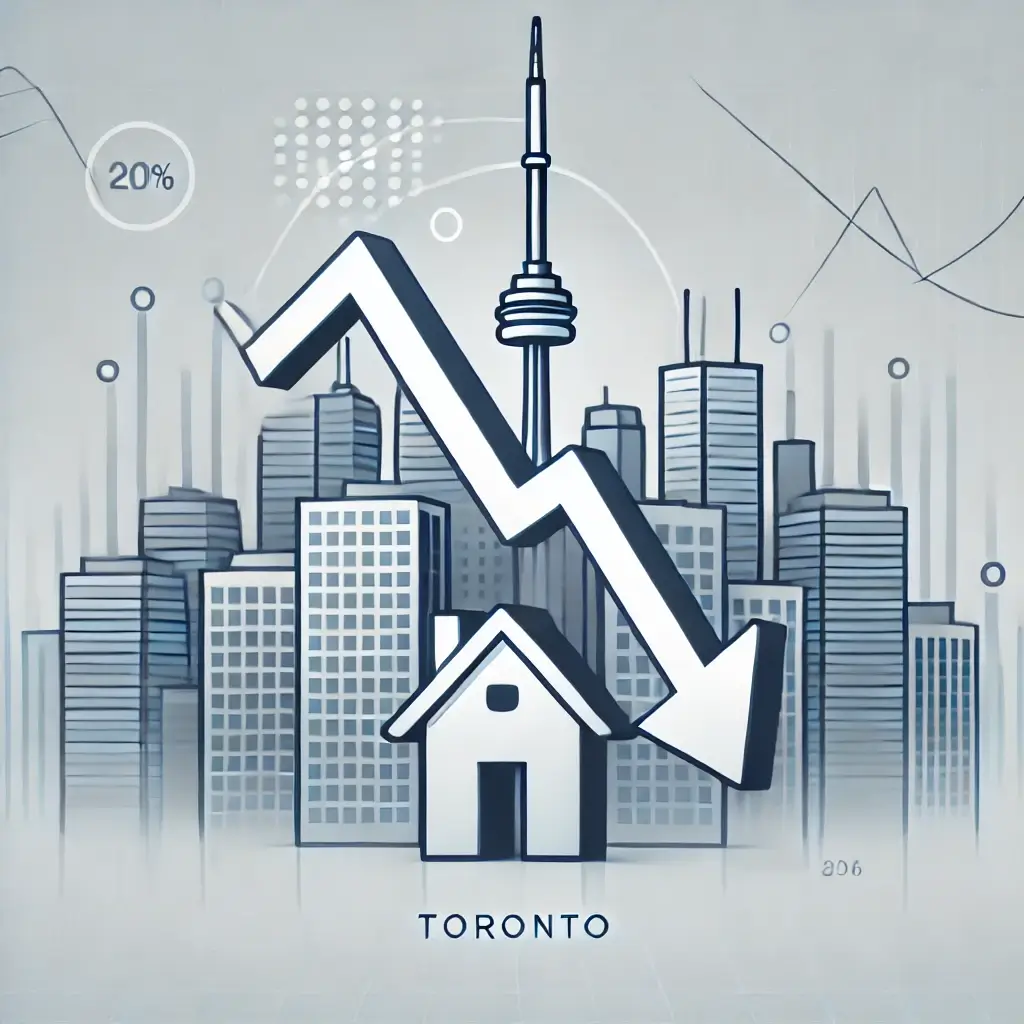Toronto’s rental market has long been one of the most competitive in Canada, with low vacancy rates and high demand driving rents up. However, in 2024, the city is seeing a notable rise in vacancy rates across various neighborhoods. For real estate investors, these changes in the rental market present both challenges and opportunities.
In this blog, we’ll explore the causes behind rising vacancy rates in Toronto, how this shift is impacting landlords and investors, and how savvy investors can adapt their strategies to capitalize on the current market dynamics.
Why Are Vacancy Rates Rising in Toronto?
Several factors are contributing to the increase in vacancy rates in 2024, including:
- Shift in Tenant Preferences
- Many renters are opting for more affordable housing in suburban areas or smaller cities outside Toronto, where prices are lower, and there’s more space. The hybrid work model and work-from-home arrangements have made living in the city less necessary for some professionals, leading to higher vacancies in urban areas.
- Increase in New Rental Supply
- A significant number of new condo developments have been completed in recent years, and many of these units are being rented out. The increase in supply is contributing to higher vacancy rates, particularly in downtown neighborhoods with a concentration of new builds.
- Impact of Rising Interest Rates
- Rising interest rates have made homeownership more difficult for some prospective buyers, but it has also led some renters to hold off on purchasing homes, adding to rental demand. However, with more landlords facing higher mortgage payments due to rate increases, there is more pressure on rental prices.
- Immigration and Population Growth
- While Toronto continues to see strong population growth due to immigration, the increase in supply has temporarily outpaced demand, especially in certain areas. This mismatch is leading to a rise in vacancy rates, though long-term projections still point to steady rental demand in the future.
How Do Rising Vacancy Rates Affect Landlords and Investors?
- Increased Competition Among Landlords
- As vacancy rates rise, landlords face increased competition to attract tenants. This often results in landlords having to offer incentives such as free rent for the first month, reduced deposits, or discounted amenities. Investors need to consider these added costs when calculating the potential returns on their rental properties.
- Rental Income May Be Impacted
- Higher vacancy rates can lead to lower rental income as landlords may have to reduce rent prices to attract tenants. This is especially true in neighborhoods with a significant number of new rental units on the market, where supply is higher than demand.
- Longer Lease-Up Periods
- Investors may find that it takes longer to rent out their properties, particularly in high-density areas like downtown Toronto. A property that remains vacant for an extended period of time can eat into an investor’s profits, so having a strategy for filling units quickly is essential.
- Opportunities for Long-Term Investors
- Despite the short-term challenges posed by rising vacancy rates, long-term investors can still find opportunities. With an expected rebound in population growth and rental demand, particularly as immigration increases, investors who can weather the current market may benefit from rising rental rates in the future.
How Can Investors Adapt to the Changing Rental Market?
- Focus on High-Demand Neighborhoods
- Not all areas of Toronto are experiencing the same increase in vacancy rates. Investors should focus on neighborhoods with strong demand for rentals, such as those near major transit lines, universities, or employment hubs. These areas tend to have lower vacancy rates and more stable rental income, even during market fluctuations.
- Neighborhoods like Midtown, King West, and Liberty Village still maintain strong demand due to their proximity to amenities, public transit, and employment centers. At Taya Real Estate, we can help identify prime locations that align with your investment goals. Visit Taya Real Estate or connect with us on Facebook for expert advice.
- Offer Competitive Pricing and Incentives
- In a market with rising vacancy rates, pricing your rental competitively is crucial to attracting tenants. Keep an eye on local rental rates and ensure your property is priced in line with similar units in your area. Additionally, offering incentives like flexible lease terms or including utilities in the rent can make your property more appealing to prospective renters.
- Upgrade Your Property to Stand Out
- In a competitive rental market, properties that offer modern amenities, updated finishes, and attractive features will have an easier time attracting tenants. Consider making upgrades that increase the appeal of your property, such as installing energy-efficient appliances, renovating kitchens and bathrooms, or offering smart home technology.
- Explore Short-Term Rental Options
- If vacancy rates are higher for long-term rentals in your area, consider converting your property into a short-term or medium-term rental. Platforms like Airbnb or corporate housing can provide higher rental income, especially in popular tourist or business areas of the city. However, it’s essential to be aware of Toronto’s short-term rental regulations and ensure your property complies with local laws.
- Invest in Growing Suburban Markets
- As more renters seek affordable alternatives to downtown Toronto, suburban markets around the GTA are becoming increasingly popular. Areas like Mississauga, Brampton, and Markham offer more affordable rents while still providing easy access to the city. Investing in suburban rental properties can offer higher yields and more stable occupancy rates compared to downtown units.
- Plan for Long-Term Market Trends
- Despite the current rise in vacancy rates, long-term trends suggest that rental demand will continue to grow as immigration increases and Toronto’s population expands. Investors who take a long-term view of the market and are willing to adjust their strategies can still find success in Toronto’s rental market. By focusing on high-quality properties in desirable areas, investors can position themselves to benefit from future market growth.
Conclusion: Navigating the Changing Rental Landscape
Rising vacancy rates in Toronto’s rental market present both challenges and opportunities for investors. While the increased competition among landlords may require new strategies for attracting tenants, the long-term outlook for the market remains positive. By focusing on high-demand neighborhoods, offering competitive pricing, and upgrading properties to meet tenant expectations, investors can still find success in this evolving landscape.
For those looking to navigate Toronto’s rental market, working with an experienced real estate team can make all the difference. At Taya Real Estate, we specialize in helping investors find the best rental opportunities and adapt to market changes. Visit Taya Real Estate or follow us on Facebook to explore your options and get personalized advice.








